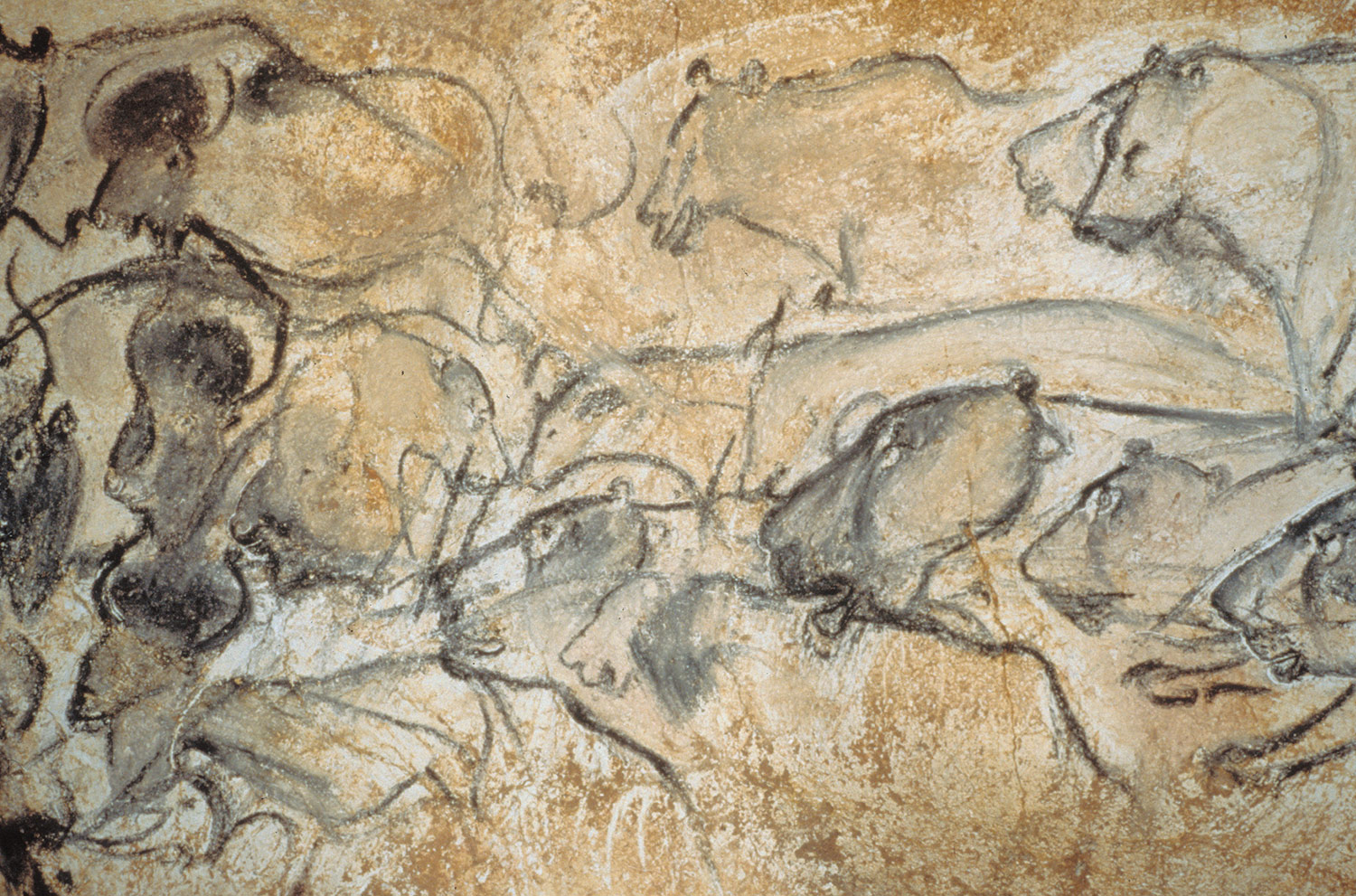 |
| Pareja de ovejas (Pair of Lambs), 2008 (Marlborough Gallery) |
In the Chauvet cave art represented in the film, I don't see the teeth of the animals, the claws, the violent capacity of the hooves. Expressive eyes, mouths, faces conveying a variety of states dominate—delicately, gracefully extending from massive, supple and powerful bodies rendered in lines that suggest sheer admiration and even adoration. The cave experience seems to encompass a record of a "family of beings," and with just a barest imagination of life in such an icy, perilous time, I am amazed to find in the faces of a pursuing pack of lions, simply raw hunger, and perhaps excitement, none of the terrorous features we ascribe to predators today.
 |
| (They look like my cats at the window, mouths open in the weird gurgling song of prey sighted.) |
I took a week to let the film sink in, avoided talking about it (mostly); avoided reading reviews. I'd gotten wind of the fact that some folks were disappointed. And to be fair, I am a total Herzog convert. I have enjoyed every Herzog film I've seen for many years. And I guess I haven't seen any that I haven't enjoyed.
While I was watching the film, and since, I've felt so relieved that Herzog is the filmmaker who was given access to the cave for filming. His work may not be associated with delicacy, but I see here, and throughout his films, a depth of appreciation for human experience that allows him to gather even the most seemingly extreme examples of our lives "under the same umbrella." Herzog's characters, often "real people," are not portrayed as exceptional, or, perhaps more accurately, they are portrayed as examples among the exceptional multitude; fascinating, flawed, capable of twists and turns and feats that stretch our minds and even our imaginations when we take the role of observers. Pilots, explorers, immigrants, bear-lovers, and now, paleolithic man.
I've still not read the reviews, except that I finally read Mark Doty's thoughts on the film this morning on his wonderful blog, feeling I'd given my own experience time enough to seep fully in (Doty's work was an early inspiration and continues to urge and inspire, and, ah, those we admire can so powerfully influence opinion). For me, what elevates Cave of Forgotten Dreams beyond simple presentation are the scenes that let the talking heads meander a bit, come to life, evoke curiosity on their own behalf. The evidence is in, the Chauvet animals touch viewers millenia hence; for me, Herzog's handling of the scientists, historians, et alia lifts these, our contemporaries, into a counterbalance across time to share in the mystery—who made the paintings? how many? why? we know there was fire, did they sing? And then, does the juggling archaeologist always dream? Does spear thrower Jean-Michel Geneste garden? (We see him out of doors a lot, and for some reason I see him as a gardener.) Herzog niggles a bit, digs a bit, and suddenly a flash of personality radiates from his lovely little array of modern sources. Herzog slogs through any awkwardness to allow the resonance. One of Herzog's powers is to blast by any worries of awkwardness.
Whether or not I agree with Herzog's suggestion that the Chauvet art represents a manifestation of the birth of modern man's soul, in my daily struggle with misanthropy, in Herzog's film I take a tonic that reminds me of an arching sweetness in our species' arc, that at the very least must weave in and parallel some of our darker propensities.
Final note: I have hereby memorized the html code for my beloved em dash: —

2 comments:
Check out this announcement, art from trash. It reminded me of your poem about the Pacific garbage patch. Turns out it doesn't have to be all dystopia: http://j.mp/jhf2Gw
Indeed! Thanks for the link!
Post a Comment